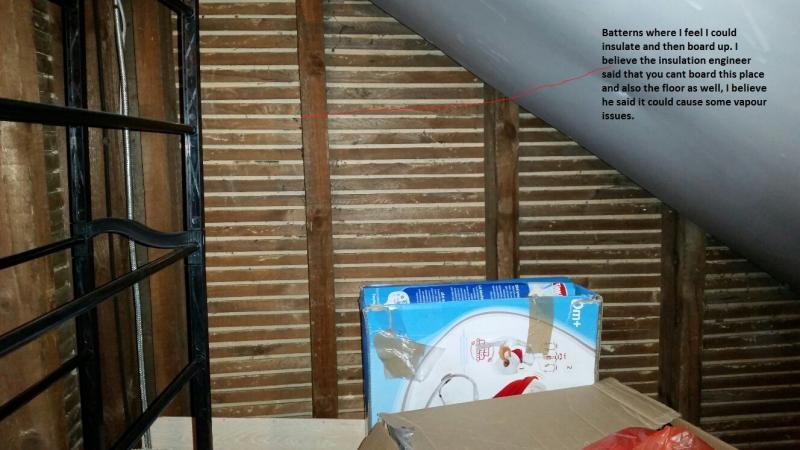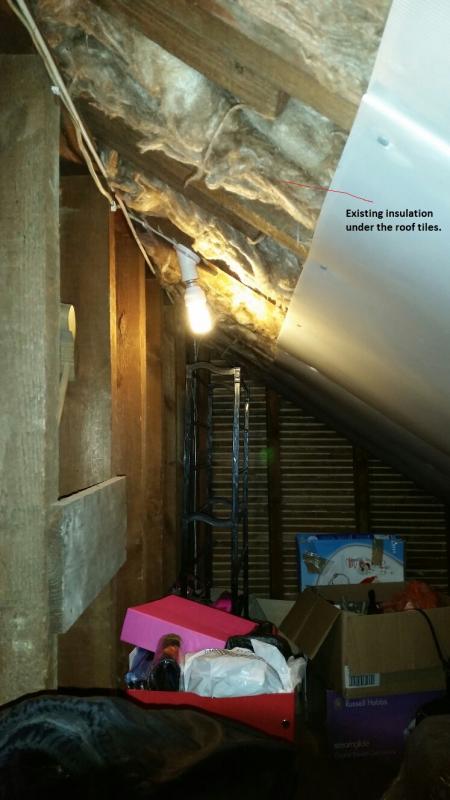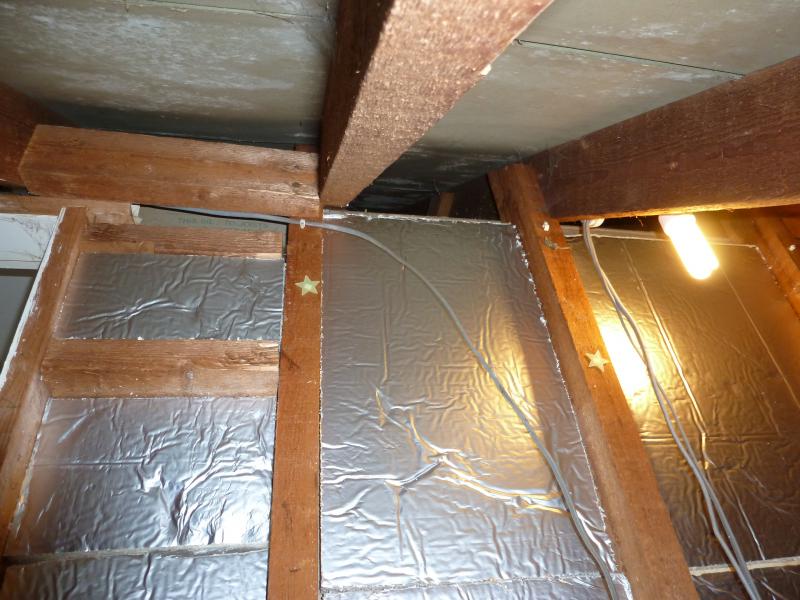Hi All.
We have just moed into a house and we were shocked as to how much we are spending on heating. I have contacted British gas to take advantage of the free loft insulation offer. The engineer came out and now he has said that we could benefit from loft insulation, he said the preset insulation is only 50mm and it will be massively increased. However our house is a Chalet semi, so he said that the slanty section of the roof/loft is not covered under the funding. He did however explain how we could still insulate the place, I wasnt taking down notes on the day so I couldnt really understand what he meant over the phone.
The master bedroom leads to the loft storage area, its always cold and this is affecting how much heat can be retained in our bedroom. He did say that one part of the loft storage room can be insulated, we already have the underneath of the tiles insulated, but he also said you cant have floor insulation (under floorboard) and somewhere else insulated due to vapour issues or something like that.
Now I had a look when I got back from work that day and at night, its almost like the batterns flow with cold air and to me, it looks like an easy win, if i can get the rock wool insulation, I can fill up the batterns and then board it up.
I just wanted to know if anyone agreed with my solution. I feel this will help until such time that the actual loft will be insulated.
Thanks in advance.
This is the outside
This is the area that i want target, the batterns.
Section of the loft
Existing insulation
We have just moed into a house and we were shocked as to how much we are spending on heating. I have contacted British gas to take advantage of the free loft insulation offer. The engineer came out and now he has said that we could benefit from loft insulation, he said the preset insulation is only 50mm and it will be massively increased. However our house is a Chalet semi, so he said that the slanty section of the roof/loft is not covered under the funding. He did however explain how we could still insulate the place, I wasnt taking down notes on the day so I couldnt really understand what he meant over the phone.
The master bedroom leads to the loft storage area, its always cold and this is affecting how much heat can be retained in our bedroom. He did say that one part of the loft storage room can be insulated, we already have the underneath of the tiles insulated, but he also said you cant have floor insulation (under floorboard) and somewhere else insulated due to vapour issues or something like that.
Now I had a look when I got back from work that day and at night, its almost like the batterns flow with cold air and to me, it looks like an easy win, if i can get the rock wool insulation, I can fill up the batterns and then board it up.
I just wanted to know if anyone agreed with my solution. I feel this will help until such time that the actual loft will be insulated.
Thanks in advance.
This is the outside
This is the area that i want target, the batterns.
Section of the loft
Existing insulation









